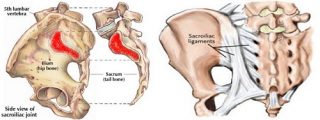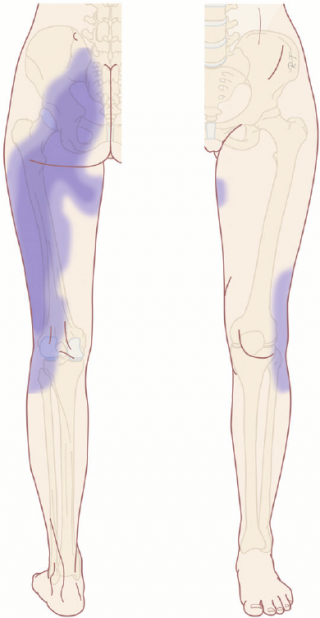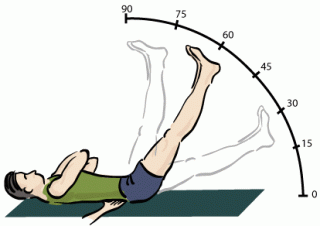

What is Sacroiliac pain and why is it overlooked ?
Lower back pain is one of the most reasons a patient may present to a Niseko Chiropractor, physiotherapist or Osteopath for treatment. About 20-30% of the population will experience some episodes of lower back pain that just doesn’t go away so you are in good company (1).
What gets more interesting is what causes the pain. A most common folk diagnosis is to complain of ” Sciatica ” where the pain originates in the lower back and then refers into the hip and leg. But from a practitioners point of view sciatica has a more specific meaning. We would refer to sciatica when there a some pressure or irritation of the sciatic nerve, most commonly a disc herniation or protrusion. This commonly radiates right down the very back on the leg and can also often be associated with numbness and parenthesis and often severe pain.

So what makes SI pain unique ?
Sacroiliac joint pain is slightly different beast. The referral pattern is often more down the side of the leg and it rarely crosses the knee or causes numbness. It is the opinion of Niseko Chiropractic that disc protrusions are being overly diagnosed as the cause of lower back pain where often they may be normal certificates of ageing.
By age 50 disc degeneration and disc bulges are more common to have than not have ! (2)The chart below from the Brinkiji et al (2015) makes interesting reading. I think one of the issues is that new imaging technologies such as MRI have allowed us practitioners unprecedented access to levels of detail we have never had before but there is a real temptation to treat the image instead of the patient !

So back to the SI joint. What makes this condition really interesting from a clinical point of view ? Firstly the literature reports that the SI joint may be responsible for about 20-40% of lower back pain yet the rates that practitioners diagnosis SI issues is much lower (3) Are we missing something ?
Its worth noting the typical pain referral patterns in the graphic below

As you can see the pain referral pattern is often down the side of the leg which is not a common when you are dealing with a disc herniation.
Another common problem we see is when this joint becomes hyper mobile. This is something that (anecdotally) seems to be more common in yoga practitioners. As this joint is essentially a wedge that transfers load from the spine to the pelvis whilst allowing just a little bit of movement any excess movement can lead to strain on the ligaments and causing pain. Hypermobility is almost always a harder fix than hypomobililty !
The current guidelines when working with athletes is trial at least 6 weeks of conservative care using manipulation and manual therapy but for a small minority sometimes intra-articular injections of a steroid can be a last line of resort for those rare non-responders (4)
How do we diagnosis SI joint pain ?
This is one area where imaging is still not a great deal of help. Even MRI’s don’t do a good job of demonstrating ligament sprain and what causes your pain. The most accurate way is still good old fashioned history taking and examination with combining 3 provocation tests getting accuracy of around greater than 75% sensitivity and specificity according to some studies for identifying a painful SIJ (3).
It’s also important to rule out disc and other causes which generally have a positive Straight leg raise test and show up on neural tension tests such as the one below

So how is SI pain treated ?
Interesting Niseko Chiropractic seems to find better relief with the lower force Soft tissue release such as deep tissue massage and gentle mobilizations but sometimes a side lying manipulative technique can also do wonders.
Rest is also really important. SI joints are primarily stabilized by ligaments and due to a poorer blood supply their healing time is often weeks even a months compared to muscle strains which can sometimes be repaired in a matter of days.
Surgery is not usually a good option for SI joints with around 80% reporting unfavorable outcomes after getting their SI joints fused ( 3) . Perhaps that little bit of flex and movement in this joint is more important than we realise.
If you would like to schedule an appointment with Niseko Chiropractic you can do so on the link below.

